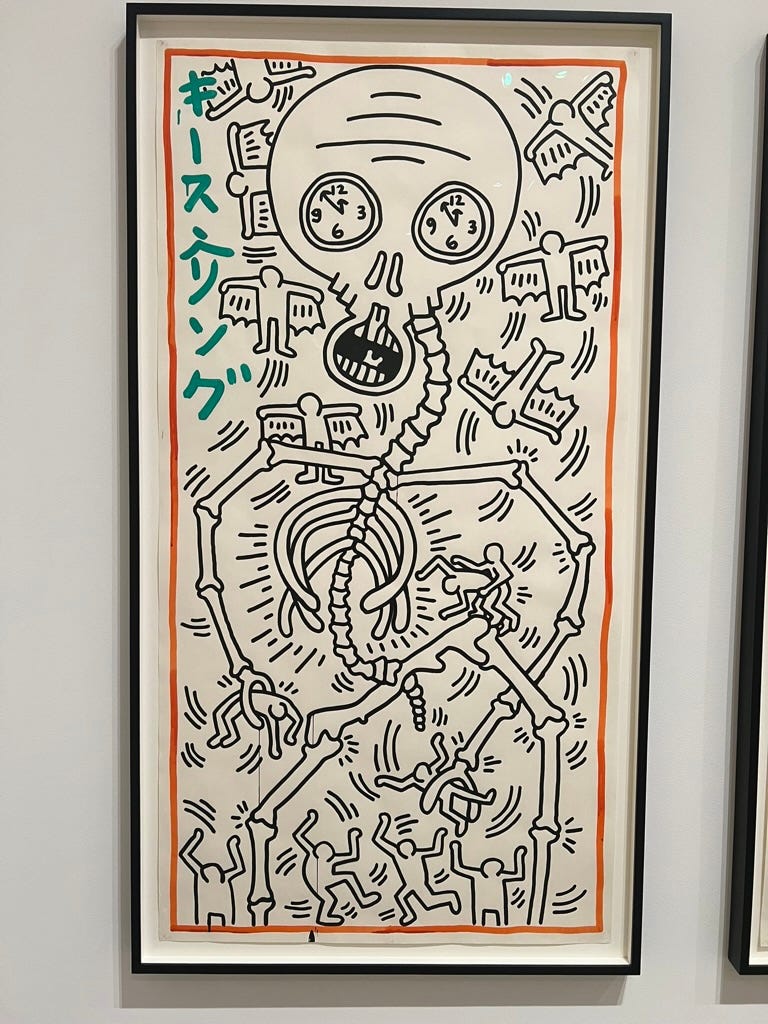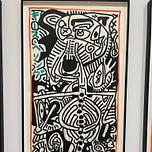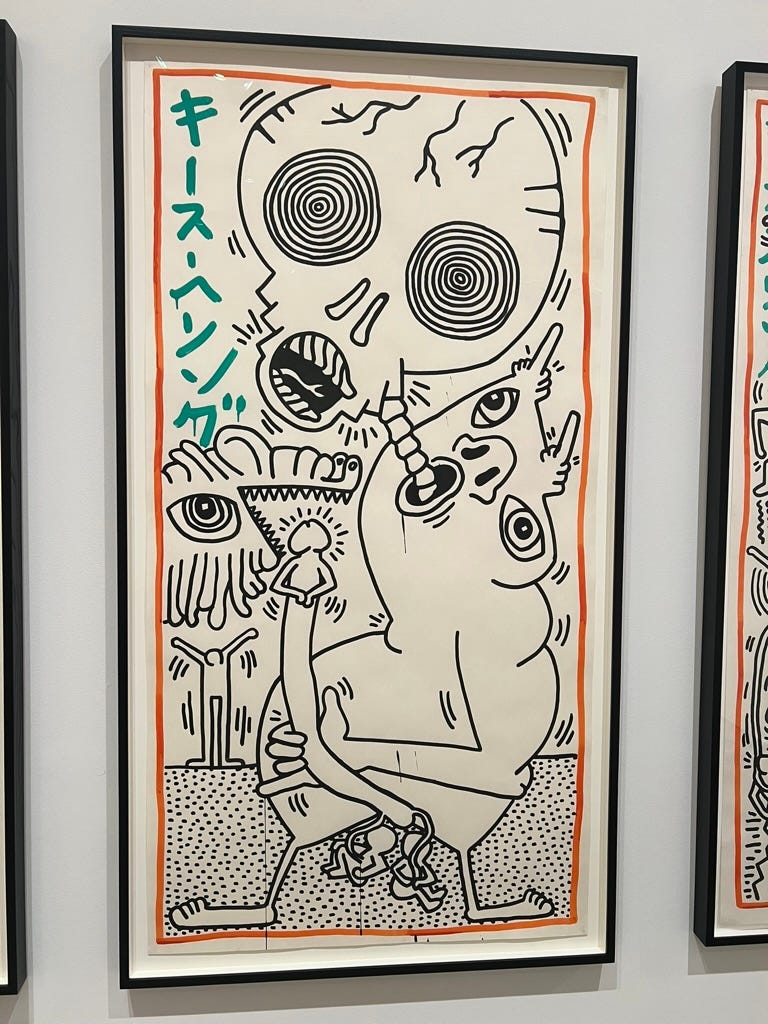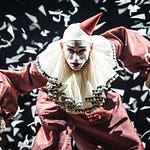A few weekends ago, I found myself back in Los Angeles - the city of endless signs, roads, and sunshine. I had bought tickets to the Keith Haring exhibition, "Art is for Everybody” when the exhibition was announced a year ago. Keith’s life and work has always been a Northstar for me. He was from a small town in Pennsylvania. He was raised Christian. He was white and gay, with a tinge of awkwardness, so I have always found an affinity towards him. His work is secondary to my obsession with how he lived his life.
My first experience of reading his journals felt like an epiphany of sorts. I was reading it almost as a guide to how I might contribute something to our society that was positive. He struggled with faith, his family, and his own understanding of his purpose in life. He was human. I was looking for the artist voice in art history that spoke to me. And it was Keith’s voice that was the clarion call. Art history is often siloed to the object, the form, the style, or the medium. I strive to engage with pieces of art through the artists’ lens. I think it’s important to ask questions about why is this artist making, what are they making, who is it for, and what is their intention?
The exhibition was about 135 objects and most of these works I have seen previously in New York City during a Brooklyn show in 2013 and or the show that I was able to work on, The Political Line at the De Young museum in 2016 . I think one of the most striking aspects of this exhibition for me, is that Haring’s work is always relevant. He addresses sexuality, nuclear war, police violence, religious oppression, and the positive sides of community through his work. The exhibit showcased his range with different kind of objects including: totems, paintings on tarps, his political work, his graphic work, and drawings.
The series in the exhibition that stuck with me was a series addressing nuclear war and the impact of the atomic bomb. Keith was influenced by Japanese bookmaking and illustration and calligraphy. He spent a lot of time in Japan. The Japanese public loved Keith Haring for his vibrancy, graphics, and comic nature of his work. Keith also created a symbology and language that formed over time. I have always been kind of obsessed with the Manhattan project and the incredible power of the atomic energy and how we leveraged the Atomic Bomb against Japan in World War II.
I think often Keith Haring’s impact is limited because of maybe only contemporary culture current culture knows him for Unilqo merchandise or fun characters including dogs and the dolphins and collaborating with children painting the Statue of Liberty. His work is accessible. But, I think the title of the show “Art of Everybody” is actually a political statement. Keith is addressing the inequalities that he is seen on the street in New York City in the 80s that we still see today and with this series of painting, he is addressing the the atrocities of the atomic bomb on Hiroshima and Nagasaki. The paintings are full of skulls, clocks, and his angels going towards heaven. The sumi ink is dripping. They are challenging to view. This is the Keith Haring that captured my imagination and continues to do so.

“Keith Haring: Art for Everybody” is now on view at the Art Gallery of Ontario through March 17, 2024.













